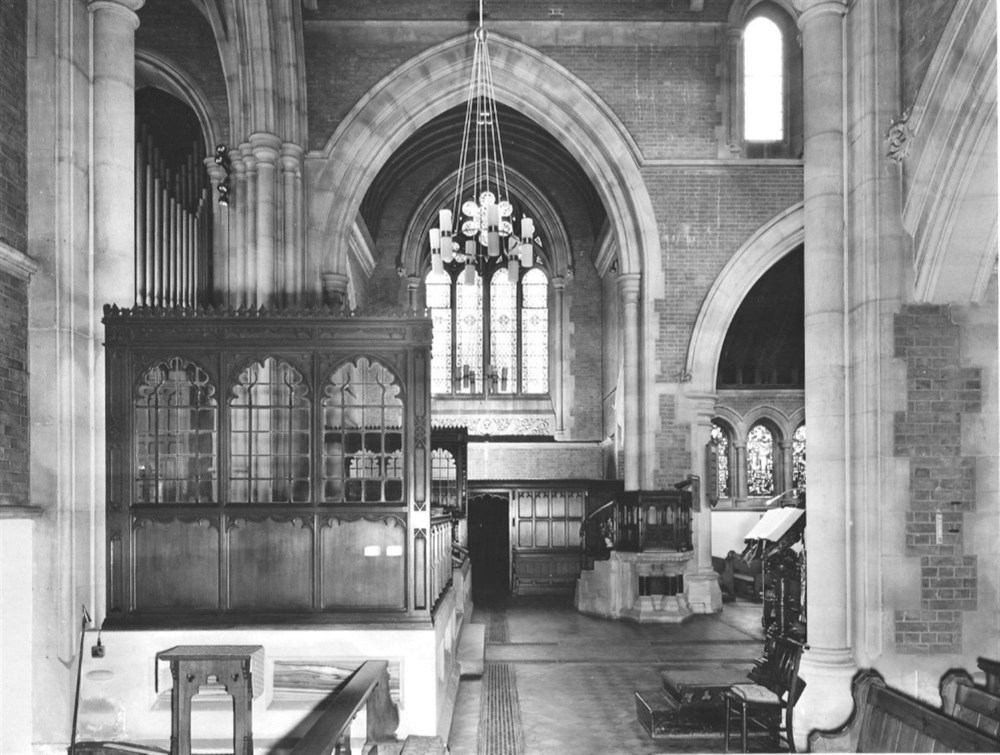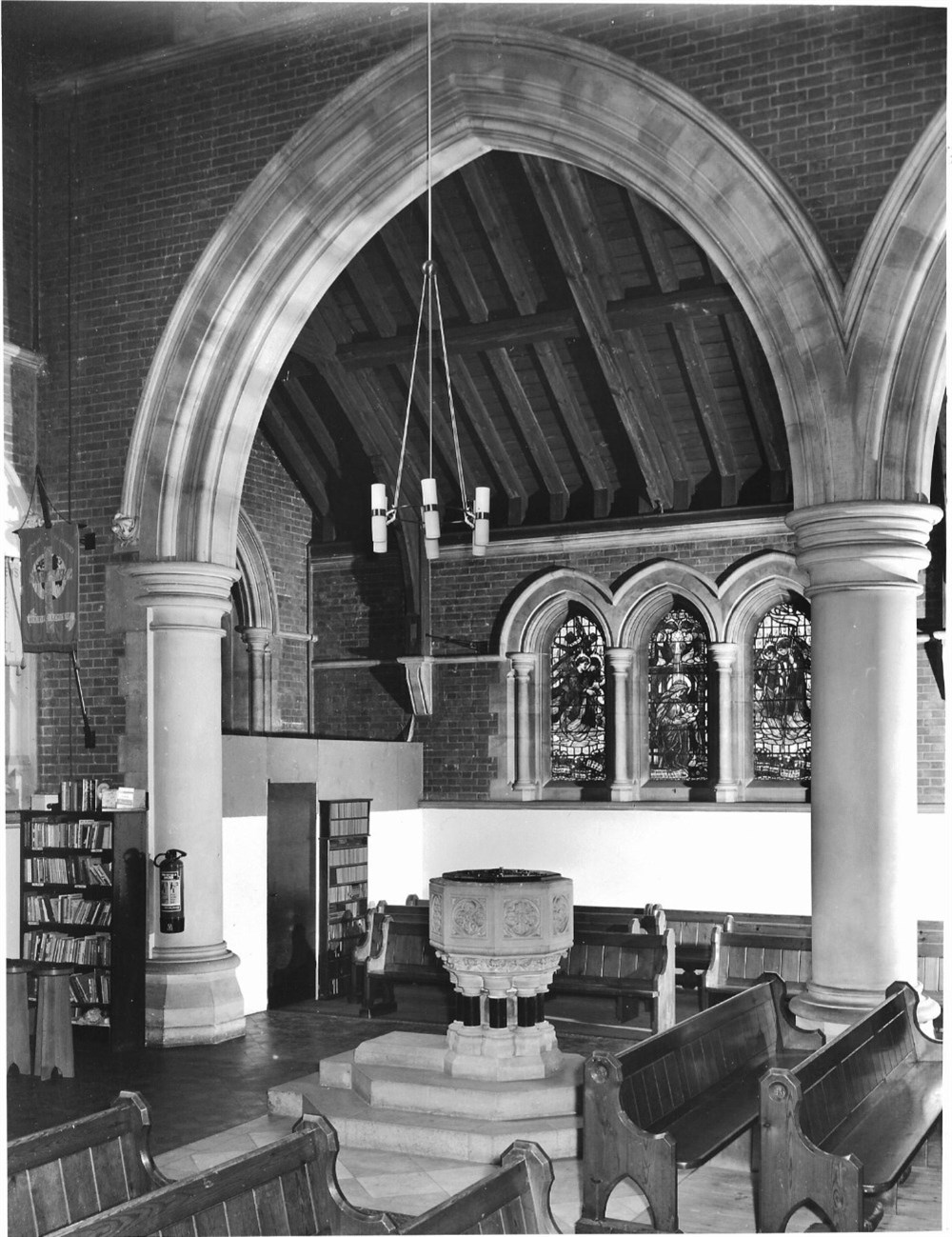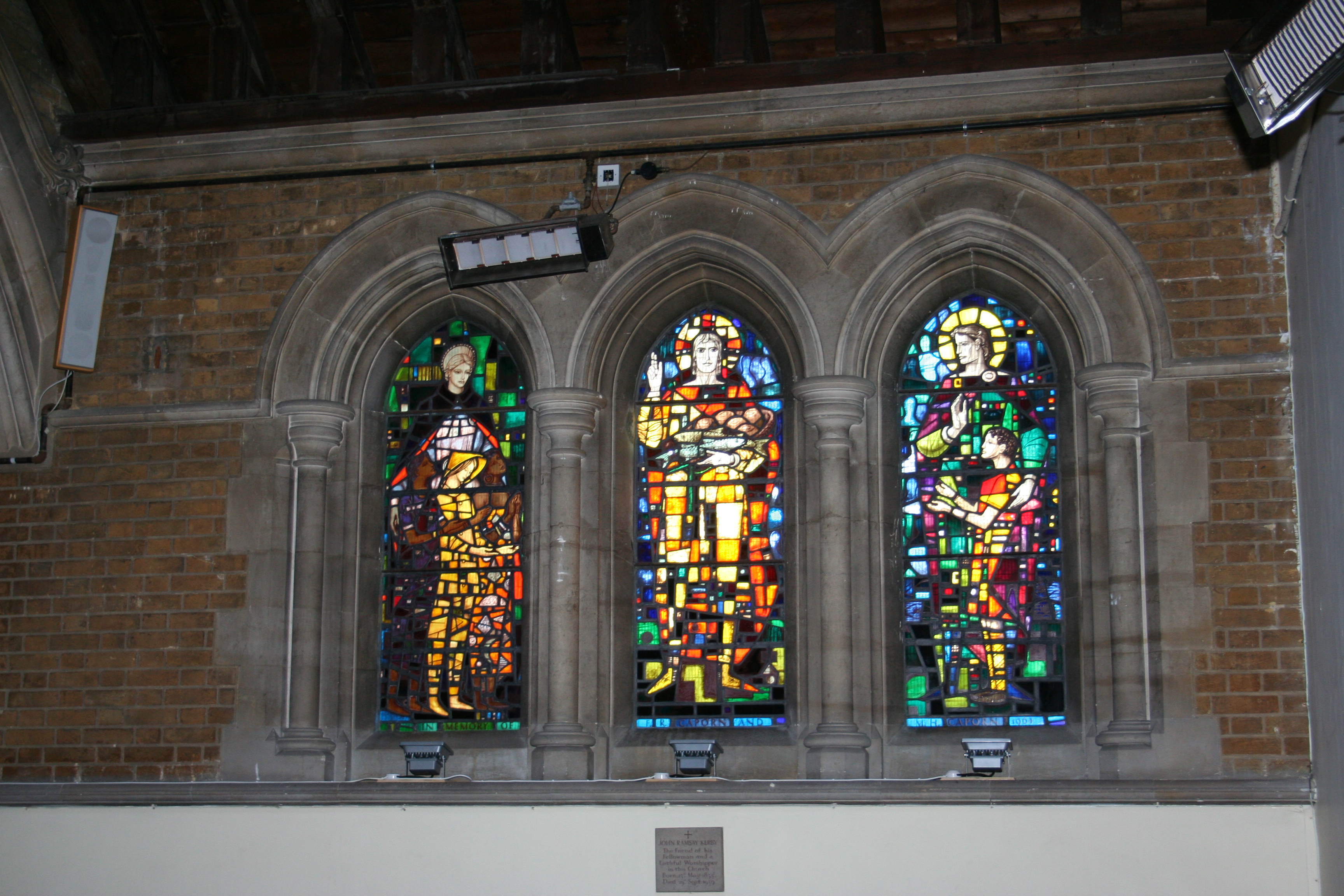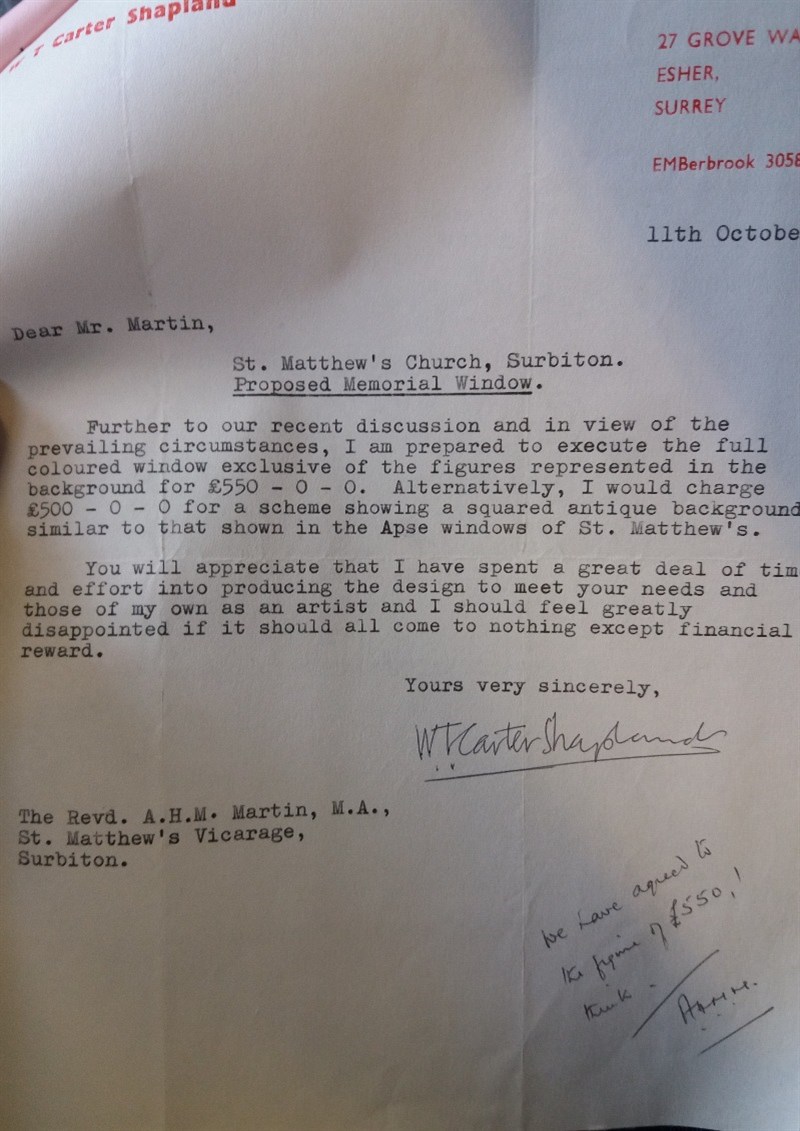St Matthew’s undergoes a major re-ordering to celebrate the church’s centenary. Miss Sitzler, a long-standing member of the congregation, has died in 1972 and left the bulk of her estate (some £55,000) to the church to be used for building. The side aisles are closed off to create new rooms and a new hall is built at the back of the church, named the Sitzler Room in her memory. The pulpit, lectern and font are removed and a nave altar table installed on a new dais.
The church had adopted the national Stewardship initiative during the 1960s under the leadership of the Vicar’s Warden, “Bobs” Caporn. Canon A. H. M. (‘Jimmy’) Martin had taken over as Vicar in 1959, remaining until 1971. In 1970 a window was installed (after years of delay) in memory of Mr. Caporn and his wife, made by another notable designer, W. T. Carter Shapland. The Stewardship campaign was aimed at encouraging congregations to take more responsibility for the running of their churches both practically and financially.
The centenary celebrations and re-ordering took place under the leadership of Rev. Roger Lewis, Vicar from 1971 to 1989.
 Above
Above The front of the church before 1974
 Above
Above The original font from 1875
 Above
Above Carter Shapland's Stewardship Window
Below A 1967 letter from Carter Shapland to the Vicar, Canon Martin
